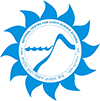Uncategorised

Salaj.S.S
Scientific Officer Gr 2
Email :This email address is being protected from spambots. You need JavaScript enabled to view it.
Phone(Off) :
Phone(Res) :
Fax :

Rameshkumar.M
Scientific Officer Gr 2
Email :This email address is being protected from spambots. You need JavaScript enabled to view it.
Phone(Off) :
Phone(Res) :
Fax :

Mohanan.S
Scientific Officer Gr 2
Email :This email address is being protected from spambots. You need JavaScript enabled to view it.
Phone(Off) :
Phone(Res) :
Fax :

Ajithkumar.M
Scientific Officer Gr 2
Email :This email address is being protected from spambots. You need JavaScript enabled to view it.
Phone(Off) :
Phone(Res) :
Fax :

Raju.D
Scientific Officer Gr 3
Email :This email address is being protected from spambots. You need JavaScript enabled to view it.
Phone(Off) :
Phone(Res) :
Fax :




 RTI Act
RTI Act

